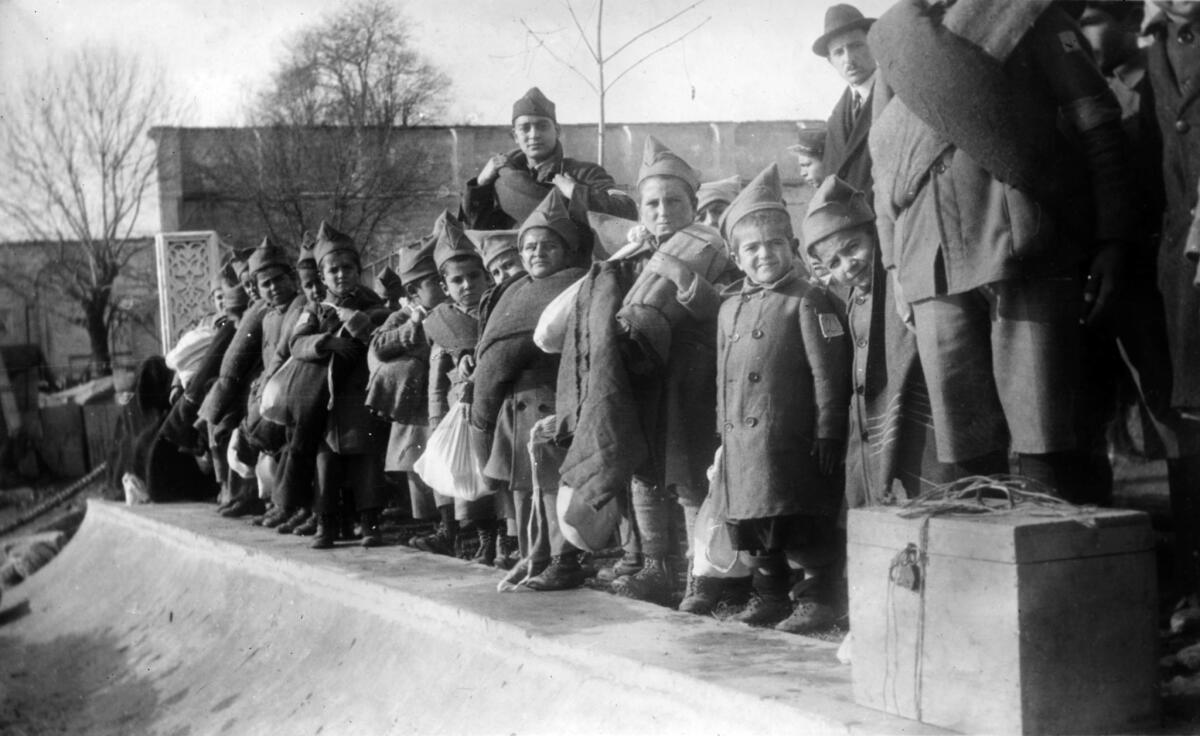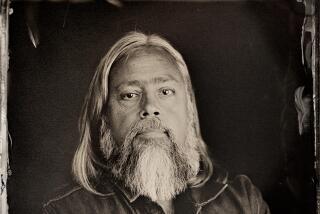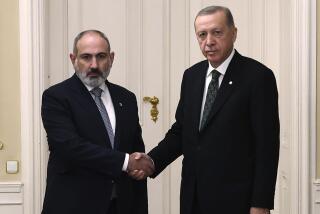English translations of Armenian memoirs share diaspora stories with a new generation

In the spring of 1915, college student Hagop Abadjian left school to escape conscription into the Ottoman military and embarked on a journey that led him back to Musa Dagh, the mountain in Turkey that was his home. A half-century later, Hagop recounted this trek over seven pages typewritten in English. There’s much more to the story, of course, and a fuller account of his journey is recounted in his memoir, which was written in Armenian and posthumously published in 1986.
Eleen Abadjian Bedrosian was just a child when her paternal grandfather died, but she remembers the big stacks of paper in his Toronto home and the typewriter from Egypt with the Armenian letters on the keys. Bedrosian, a graphic designer and artist based in Glendale, has tried reading the memoir in Armenian, but progress is slow. Much of what’s in the book was related to her by Vehanosh Abadjian, her mother and Hagop’s daughter-in-law, who has read it multiple times.
The Young Turk regime launched a systematic campaign to purge the Ottoman Empire of its Armenian citizens in 1915. In all, an estimated 1.5 million lives were lost. After the catastrophe, some survivors, as well as their descendants, wrote down the stories, the results forming its own genre of literature: survivor memoirs. These books are part of the overwhelming evidence that the Armenian genocide, which Turkey continues to deny responsibility, happened. But, for descendants of the survivors like Bedrosian, memoirs can also be a link to family histories. In the diasporan community in the U.S., Armenian-to-English translations are a way of sharing that history with those who can’t read them in the original language.
In the diasporan community in the U.S., Armenian-to-English translations are a way of sharing ... history with those who can’t read ... the original language.
Outside a Glendale coffee house, Bedrosian and her mother show a copy of the memoir, its cover depicting blood falling from a mountain. Bedrosian translates the title, which is written in Armenian, to “Pages From My Life Book.” The two look through an album of photos as well. Hagop was a photographer who eventually opened his own studio in Venezuela before moving to Canada in his retirement. There are pictures in here from the time of the genocide and the years following it, from Hagop’s wedding to Bedrosian’s grandmother in Egypt, of his young family in Lebanon and of an Armenian community’s later return to Musa Dagh.
Musa Dagh (also known as Musa Ler) was the site of a resistance against Ottoman forces set on annihilating the empire’s Armenian population. That event informed Franz Werfel’s 1933 novel, “The Forty Days of Musa Dagh,” and more recently the 2016 film “The Promise.” It’s part of Bedrosian’s family history and she wants to preserve it. Now she would like to have the memoir published in English, not just for herself, but for her children, ages 11 and 7. Sometimes they ask her about the genocide. She says, “When they ask me, I tell them about Grandpa.”
Survivor memoirs
There’s a history of documenting the Armenian struggle inside the Ottoman Empire that pre-dates the genocide. Gegham Mughnetsyan, the Chitjian researcher archivist at USC’s Institute of Armenian Studies, notes the archive’s holdings of books written in the late 1800s and early 1900s. Here, eyewitnesses recounted the Hamidian massacres and the Adana massacre, precursors to the Armenian genocide. “The people had already started writing down the stories,” he says by phone.
Memoirs of the genocide began to appear shortly after the events unfolded. In 1918, Henry Morgenthau, who had been the U.S. ambassador to the Ottoman Empire, published his memoirs. This was the account of a witness rather than a survivor, but that same year, Aurora Mardiganian, a survivor who had recently arrived in the U.S., told her story in English through her 1918 book “Ravished Armenia.” Mardiganian would go on to star in American screenwriter Harvey Gates’ film adaptation of the book the following year.
Translating experiences
Over time, numerous memoirs have been written in Armenian and English — some solely by the survivors, some in connection with family members. They are individual stories that, as a whole, point to a shared experience.
Ishkhan Jinbashian is an L.A.-based, Armenian-to-English translator who has worked on multiple genocide memoirs. Typically, he says, he’s hired by families who want to have the books in English for relatives who don’t read Armenian. It’s complex work for more than just linguistic differences. “Translating them is often extremely emotional,” he says by phone.
Through this work, Jinbashian sees similarities within the accounts. “The places and names, obviously, differ,” he says, “but there are similar stories of persecution, deportations, summary execution, the refugee situation that they faced and the diseases.”
One recent job, a translation of “Bloodied, But Unbowed: A Memoir of the Ashur & Arshaluys Yousuf Family” by Alice Nazarian, was unusual; its focus is on an ethnically mixed family in the region of Kharpert. Ashur, a professor who was killed in 1915, was Assyrian. Arshaluys was Armenian. The book, written by their daughter, brings together the Armenian genocide with the Assyrian genocide that occurred in the Ottoman Empire at around the same time. The translation became a project of the late author’s L.A.-based family: Her son, John Nazarian, funded it; her granddaughter, Arda Darakjian Clark, edited it; and great-grandson, Haig Boyadjian, provided additional research.
In her research, Clark, a former technical writer, connected with an archive that had a collection of her great-grandfather’s handwritten, monthly magazine as well as an Assyrian publication that was written primarily in Armenian and contained a letter penned by her great-grandmother about Ashur’s arrest, incarceration and death. The letter, translated into English and included in the book, helps show the connection between Armenians and Assyrians in the Ottoman Empire. “Finding the parallels” between the two communities living in this region was an interesting part of the project for Clark. “They lived side by side,” she says by phone, “and shared a similar fate in 1915.”
Searching for answers
Not all genocide survivors wrote down their stories or even spoke of them often. That’s the case in my own family, as far as we know. We have some information about my great-grandparents’ experiences, which has been passed down orally over the generations. Yet I often find connections reading others’ accounts. I might recognize the names of the towns or regions where my ancestors lived or come across accounts eerily similar to what I’ve heard about my great-grandparents. Survivor memoirs help me understand the extent of the trauma families like mine endured. And I might not be alone in that.
“When we have 10 stories, there are maybe 10,000 stories that we will never know,” says Mughnetsyan. The experiences that were written down provide an important connection for all ethnic Armenians. “More or less everybody ended up, in one way or another, facing the exact same atrocity,” says Mughnetsyan. “This brings it all collectively together. It, in a way, validates the story of those who are searching for some kind of an answer about their own families.”
More to Read
Sign up for our Book Club newsletter
Get the latest news, events and more from the Los Angeles Times Book Club, and help us get L.A. reading and talking.
You may occasionally receive promotional content from the Los Angeles Times.







